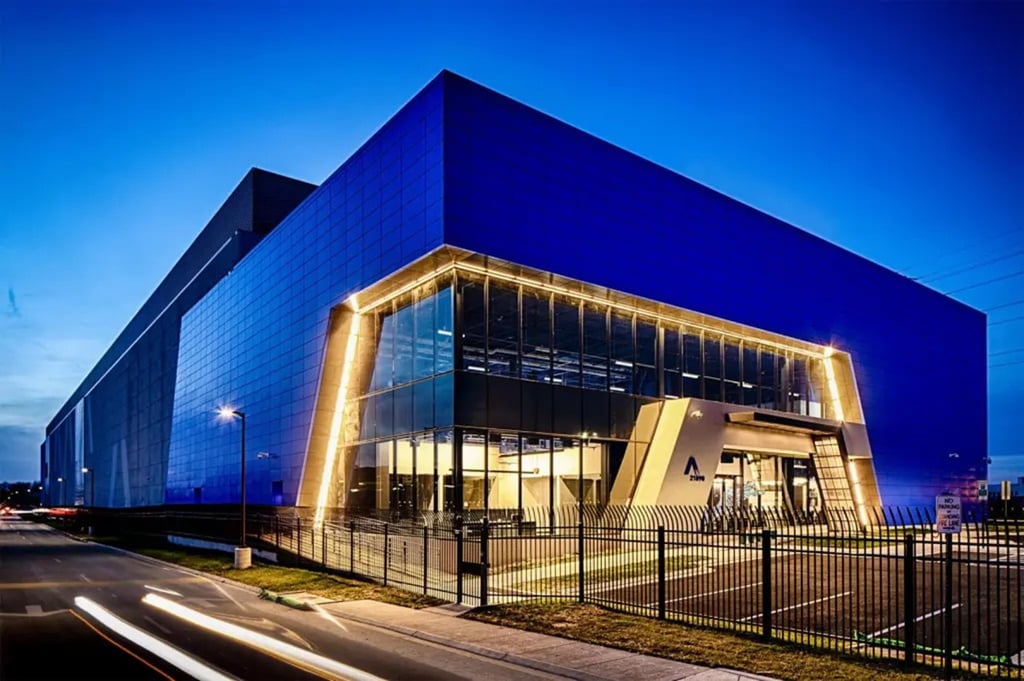To be sure, the debate about converged vs. hyperconverged is a central one in today’s IT meetings.
As advanced as IT technology is these days, it still poses some vexing challenges when it comes to purchasing decisions. Would you, for example, buy a car by purchasing the tires, frame, engine, interior, and body separately and assembling it? Of course not. Yet that’s how we purchase IT systems. Compute, networking, storage, software, and specialized systems are all sold separately, often from different vendors, and then assembled and configured. And yet we are perfectly ok with this.
This started to change with unified computing systems from Cisco, HP, Dell, IBM and Oracle. They combined compute, networking, and storage with pre-loaded and pre-configured software and virtualization in a turnkey single system. The next stage of those systems are known as converged and hyper-converged infrastructure (HCI).
In the early days of unified computing, the hardware was combined into one system but there was still software configuration to be done. Convergence infrastructure goes beyond bundling and pre-integrating a selection of different IT systems offerings, where vendors offer everything needed so they can be the single source for all enterprise computing needs.
What’s the Difference: Converged vs. Hyperconverged?
So what is the difference between converged and hyper-converged infrastructure? Simply put, converged systems are a hardware-focused solution while HCI is software-driven.
Converged systems are products where consumable resources such as compute, memory, storage, and networking are made available in an engineered solution. One element not represented in hyper-converged systems is that a general converged system usually has scale-up model for expanding various consumable elements.
Some would argue there is no true “convergence” in what are billed as converged infrastructure. Converged infrastructure solutions are simply pre-configured (or pre-validated as a configuration) combinations of servers, storage and sometimes networking switches, orchestration software, etc., but have none of the type of redundancy eliminations you would expect from a converged solution such as hardware or management tiers.
One big difference between the two is in expansion. In a converged infrastructure, compute and memory is expanded by additional servers. Storage capacity and performance are increased by adding additional shelves of disks. These can be expanded independently, but still fit in an engineered solution.
Hyper-converged is a type of converged system intended to be a scale out architecture where all resources are in nodes in a small form factor, 1U-2U racks, and growth is done by adding nodes. This adds compute, memory, network, and storage all at once, even if those resources are not necessarily needed. You might only need more storage, for example, but you have to add more compute and networking along with it. So there tends to be more control over the hardware resources in a converged infrastructure.
Hyperconverged solutions move all of the intelligence out of the proprietary hardware and put it into software. For example, an HCI solution aggregates the local storage (disk/flash) among many servers or nodes and presents it as one local volume.
In a converged architecture, the storage is attached directly to the physical servers, usually a mix of flash and traditional hard disk-based storage. The HCI system has the storage controller function running as a service on each node in the cluster to improve scalability and resilience. If a storage node goes down, simply point to another node to keep it running while you repair the downed node.
Because HCI turns the infrastructure stack into an elastic pool of x86 resources, everything is run by software, to the point that some people refer to the HCI system as a software-defined data center (SDDC). Because it’s a single shared resource pool, many more software services are available. They include:
• Data protection like backup, replication, snapshots, and disaster recovery.
• Deduplication applications.
• SSD and SSD cache arrays.
• Replication appliances or software.
• System management, provisioning, monitoring, and reporting.
Finally, another difference between the two is the vendor(s). While virtually every major server vendor offers a unified/converged system, you do still have the option to mix and match an Oracle server with EMC storage, for example. It’s all about the hardware. In HCI, much of the work is defined in software and integration is a must, so they tend to come from a single vendor. You certainly have a choice of HCI providers, but it will be a single provider nonetheless.
Where are Converged and Hyperconverged they used?
The main difference between converged and hyper-converged systems is how they scale. With converged infrastructure, you scale up by adding more drives, memory or CPUs. With a HCI system, you scale out.
Supporters of converged infrastructure promote the concept in green field, remote centers and data center renovation projects, especially in a highly virtualized data centers building a private cloud. Dell EMC says that typically a converged infrastructure is used in major Platform 2.0 applications such as Enterprise Resource Planning (ERP), Customer Relationship Management (CRM), database grids, SAP workloads and enterprise messaging.
These are platforms where you get the most out of blade servers, modular storage arrays, virtualized networks and a hypervisor, since they all compliment each other for maximum efficacy. As said before, converged infrastructure is primarily a hardware play and gets the most out of the hardware, and the above-listed apps are very hardware-intensive.
HCI then, is used in a different way. Dell EMC says it is a good fit for cloud-oriented Platform 3.0 applications such as application development environments, Big Data analytics, life cycle and cloud applications, all of which need agility and the ability to scale up and down quickly at the lowest cost per unit.
So HCI are not in competition with each other. They are used in very different circumstances and applications. So your choice is not either/or, it’s both. Most IT operations would be best served to have a mix of these two options to serve each workload.
Another stark difference is their cloud usage. A CI offering is best suited for a company’s internal cloud, where they need the benefits of a cloud system but don’t have to expose it to the outside world. A HCI system is better suited for a public or hybrid environment because it can better integrate with the hypervisors of public cloud providers, and thanks to all the software controls, the company can better manage orchestration and automation between their data center and the cloud provider.
So the bottom line is a company needs to decide its IT needs and applications, and then decide on CI or HCI from there.
-
Huawei’s AI Update: Things Are Moving Faster Than We Think
FEATURE | By Rob Enderle,
December 04, 2020
-
Keeping Machine Learning Algorithms Honest in the ‘Ethics-First’ Era
ARTIFICIAL INTELLIGENCE | By Guest Author,
November 18, 2020
-
Key Trends in Chatbots and RPA
FEATURE | By Guest Author,
November 10, 2020
-
Top 10 AIOps Companies
FEATURE | By Samuel Greengard,
November 05, 2020
-
What is Text Analysis?
ARTIFICIAL INTELLIGENCE | By Guest Author,
November 02, 2020
-
How Intel’s Work With Autonomous Cars Could Redefine General Purpose AI
ARTIFICIAL INTELLIGENCE | By Rob Enderle,
October 29, 2020
-
Dell Technologies World: Weaving Together Human And Machine Interaction For AI And Robotics
ARTIFICIAL INTELLIGENCE | By Rob Enderle,
October 23, 2020
-
The Super Moderator, or How IBM Project Debater Could Save Social Media
FEATURE | By Rob Enderle,
October 16, 2020
-
Top 10 Chatbot Platforms
FEATURE | By Cynthia Harvey,
October 07, 2020
-
Finding a Career Path in AI
ARTIFICIAL INTELLIGENCE | By Guest Author,
October 05, 2020
-
CIOs Discuss the Promise of AI and Data Science
FEATURE | By Guest Author,
September 25, 2020
-
Microsoft Is Building An AI Product That Could Predict The Future
FEATURE | By Rob Enderle,
September 25, 2020
-
Top 10 Machine Learning Companies 2020
FEATURE | By Cynthia Harvey,
September 22, 2020
-
NVIDIA and ARM: Massively Changing The AI Landscape
ARTIFICIAL INTELLIGENCE | By Rob Enderle,
September 18, 2020
-
Continuous Intelligence: Expert Discussion [Video and Podcast]
ARTIFICIAL INTELLIGENCE | By James Maguire,
September 14, 2020
-
Artificial Intelligence: Governance and Ethics [Video]
ARTIFICIAL INTELLIGENCE | By James Maguire,
September 13, 2020
-
IBM Watson At The US Open: Showcasing The Power Of A Mature Enterprise-Class AI
FEATURE | By Rob Enderle,
September 11, 2020
-
Artificial Intelligence: Perception vs. Reality
FEATURE | By James Maguire,
September 09, 2020
-
Anticipating The Coming Wave Of AI Enhanced PCs
FEATURE | By Rob Enderle,
September 05, 2020
-
The Critical Nature Of IBM’s NLP (Natural Language Processing) Effort
ARTIFICIAL INTELLIGENCE | By Rob Enderle,
August 14, 2020
SEE ALL
DATA CENTER ARTICLES







